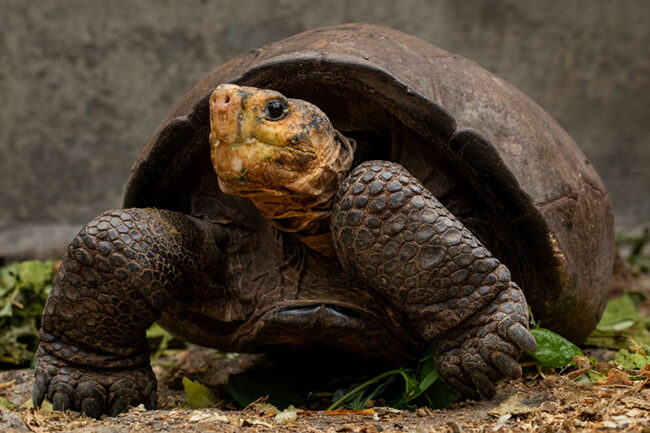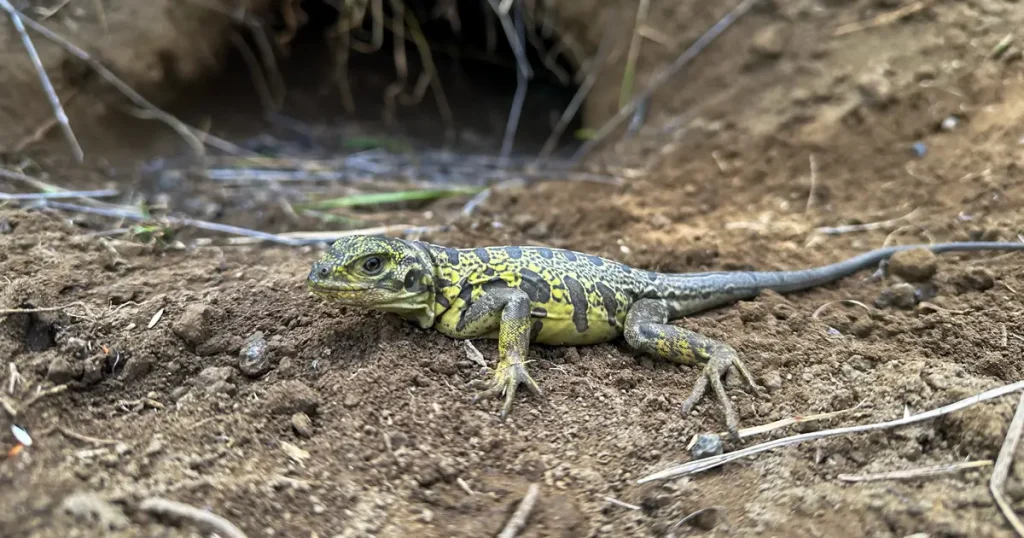Previewing: Expedition Fernandina
by Washington Tapia
Three years ago today, I was leading an expedition team of scientists, Park Rangers, and a crew from Animal Planet on Fernandina Island when we made the discovery of a lifetime: Fernanda.
Last year, we confirmed her genetic identity as a Fernandina Giant Tortoise, a species believed extinct for more than a century.
Now, after a few delays to the trip due to volcanic activity on the island, we’re ready to embark on a new expedition — the first in a series to take place in the coming year. If all goes well, we’ll depart on March 3 ready to scour the island for a mate for Fernanda that will help us save this species from certain extinction.
The evidence is clear. There are still tortoises on Fernandina Island.
That’s why, during the time that has passed since the last expedition in early 2021, we have been planning a new series of expeditions to locate them amidst the inhospitable landscape of Fernandina.
Formed approximately 500,000 years ago by magma that escaped through a fissure in the Earth’s submarine crust and lifted an existing seamount above the surface, Fernandina and its basaltic shield volcano, La Cumbre, sit at the epicenter of the volcanic hotspot that created the Galápagos Islands. During an eruption in 1968, its summit caldera collapsed, falling approximately 1,200 feet. As you can see in the photo above, the northern floor of the caldera intermittently holds a small lake, whose size, boundaries, and position morph with each eruption. Recent eruptions have occurred both in the caldera and on the outer slopes of the volcano, with some of them reaching the sea. Since the establishment of the Galápagos National Park in 1959, there have been 13 recorded eruptions on Fernandina, with some of them lasting for several days. The most recent eruptions were in May of 2005 and April 2009.
Thanks to the highest level of volcanism in the Archipelago, approximately 60% of Fernandina’s total surface area is covered with lava. This includes pahoehoe, characterized by a smooth, billowy surface, and a’a, which is jagged and sharp. Its topography is in a constant state of change, making planning and mapping expeditions to the island highly challenging — even trekking routes planned with the utmost precision can be changed in an instant. And all members of our expedition teams must proceed cautiously, as a slip on the sharp a’a lava can leave deep wounds in the skin.

Since I started my work with Galápagos Conservancy in 2014, we had been planning to do a mega expedition to look for tortoises on Fernandina. But since the world was convinced that the Fernandina Giant Tortoise (Chelonoidis phantasticus) was extinct, few people wanted to invest in what appeared to be a lost cause. But thankfully, Animal Planet stepped up to fund the expedition. I am also grateful to our supporters and donors, including Ken and Diane Saladin, for helping to finance follow-up expeditions that have helped us gather critical information on the location of additional tortoises.
In February 2019 when we found the lone female tortoise, now named Fernanda, it was the most incredible moment of my career. I must also confess that it was also entirely unexpected. No tortoise had been found on the island for more than 100 years, so not only was it the surprise of a lifetime, but it was an opportunity for me and the rest of our expedition team to be a part of history. The man who actually found Fernanda, Jeffreys Malága, a guardaparque (Park Ranger) with the Galápagos National Park Directorate and a close friend, first discovered her in a very small cave in the middle of a patch of vegetation. When Jeffreys yelled to me that he had found a tortoise, I felt an indescribable emotion, perhaps comparable to what a scientist must feel when they win a Nobel Prize. We had broken a century-old myth and made conservation history by finding this animal.

Once we returned to Santa Cruz, the initial excitement eventually ceded to an inevitable question: Is Fernanda truly a specimen of Chelonoidis phantasticus? That question was resolved only a few months ago when our colleague, Dr. Gisella Caccone from Yale University, compared Fernanda’s DNA to that of the remains of the individual located in 1906 and confirmed that she is indeed the only known living individual of the species.
If you’ve been following us on social media lately, you will have learned about ecosystem engineers and how Giant Tortoises fill that critical role in Galápagos. Basically, through their daily activities — eating, dispersing seeds in their feces, trampling down vegetation — Giant Tortoises are the architects of healthy terrestrial ecosystems in which all species can thrive. That’s why we focus so many resources on their protection and restoration.
Thanks to the generosity of our community, Galápagos Conservancy, in partnership with the Galápagos National Park Directorate, has completed three follow-up expeditions to Fernandina since we located Fernanda in 2019. Though we did not locate additional tortoises during these expeditions, we were able to gather valuable clues. In three different areas, we have found tortoise walking paths, tracks, feces from a few months ago, and even beds, where it is clear that some animals recently rested. All these discoveries show me that there are at least two or three more tortoises wandering through the rugged landscapes of the island. They’re searching for other tortoises, just like we are.
The next expedition is being planned to take place in the next few months. A team of at least 30 park rangers and scientists will head into the field for ten days with a detailed search plan and the will to do whatever it takes to locate the tortoises. Inch by inch, we will cover around 15 square miles between sea level and 2,300 feet above sea level on the west flank of the island, in the areas where we have previously found their footprints, feces, and beds.
I am hopeful that this time we will be able to find one or more companions for Fernanda.



